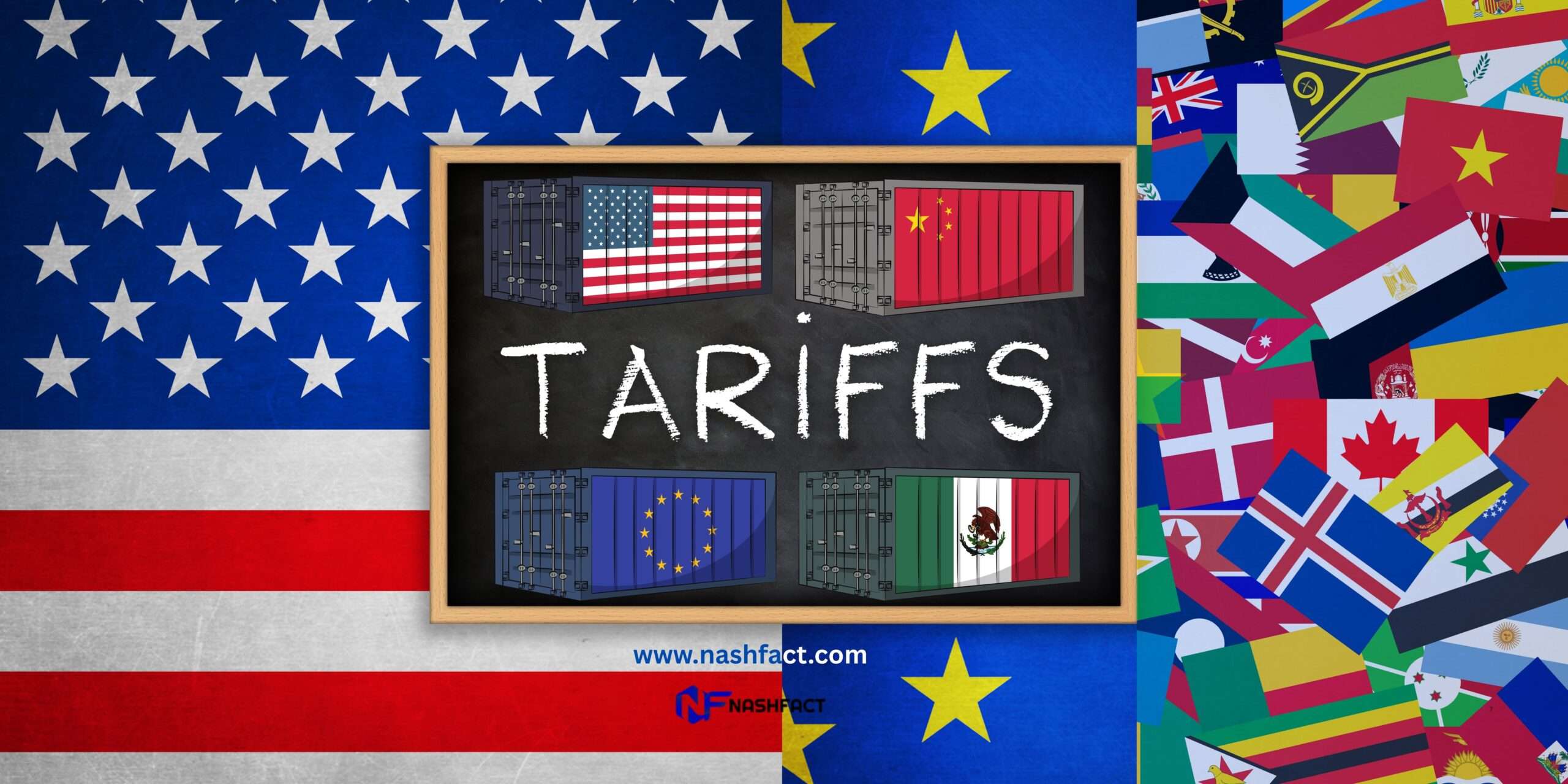- 4 April 2025
- No Comment
- 620
Trump’s Tariffs: A World on the Brink of Economic Chaos

The global economy is now caught in a storm of uncertainty as President Trump’s newly implemented tariffs take effect. With a sweeping 10% tax on nearly all U.S. imports and up to 50% on goods from key trading partners like China and the European Union, the world is already experiencing the repercussions of a full-blown trade war. Economists had warned that such measures could slow economic growth, spike inflation, and potentially trigger a global recession and those predictions are quickly becoming reality.
Across the world, prices are rising, supply chains are breaking, and retaliation from affected countries is escalating tensions. Consumers in the U.S. will feel the pinch as imported goods become more expensive, and businesses that rely on global trade are struggling to adjust to the new economic landscape. In short, the world is no longer bracing for a trade war, it is already in one.
Tariffs: Economic Protection or Political Gamble?
Tariffs, at their core, are taxes on imported goods meant to make foreign products more expensive and encourage domestic production. Trump has positioned his trade policies as a way to revive American manufacturing, punish China and other nations for unfair trade practices, and force better trade deals. However, the reality is far more complex.
While protectionist policies may help certain industries in the short term, they often lead to higher prices for consumers, job losses in export-reliant sectors, and economic retaliation from trading partners. Now that the tariffs are in full effect, the U.S. and the world are witnessing first-hand the impact of these policies.
The Domino Effect: The Global Economy Takes a Hit
The consequences of Trump’s trade war are being felt worldwide, creating a ripple effect across industries and economies.
1. China & the EU Are Fighting Back
China has already responded with counter-tariffs on American products, targeting key industries such as agriculture, technology, and automotive manufacturing. The European Union has followed suit, imposing higher taxes on U.S. tech companies, luxury goods, and other exports. This tit-for-tat economic retaliation has escalated tensions, creating uncertainty in global markets and making it more difficult for businesses to operate efficiently.
2. Higher Prices and Broken Supply Chains
With tariffs in place, the cost of imported goods has surged, driving up prices on everything from electronics and clothing to automobiles and food products. American businesses that rely on foreign materials are struggling to absorb these additional costs, and many have been forced to pass them on to consumers. Inflation has accelerated, leading to higher interest rates as the Federal Reserve attempts to keep price increases under control.
Meanwhile, global supply chains have been disrupted as companies scramble to find alternative suppliers or relocate production to avoid tariffs. This has created delays, shortages, and increased costs across industries, particularly in sectors such as technology and manufacturing.
3. Developing Nations Are Facing an Economic Crisis
South Asian countries like Bangladesh, Srilanka, and Pakistan are among the hardest hit. Trump tariffs will severely impacted their textile and manufacturing industries, leading to widespread factory closures and massive job losses. The economic fallout is pushing weaker economies into financial distress, as declining exports and weaker currencies make debt repayment increasingly difficult.
The Growing Recession Risk
The world has seen this playbook before. In 1930, the U.S. passed the Smoot-Hawley Tariff Act, triggering a global collapse in trade that worsened the Great Depression. With Trump’s tariffs now in full force, a similar economic downturn is looming.
Stock markets have reacted with extreme volatility, as investors fear the long-term consequences of this trade war. Export-dependent industries are laying off workers, and businesses are struggling to adapt to rising costs. If the situation escalates further, the world could be on the brink of a major recession, with lasting damage to global economic stability.
Who Are the Real Winners and Losers?
Short-Term Winners
✔ U.S. steel and manufacturing companies, temporarily protected from foreign competition.
✔ Politicians who use trade wars as a rallying point for nationalist economic policies.
Long-Term Losers
✔ American consumers, who are now paying significantly higher prices for goods.
✔ Small businesses, which rely on imported materials and now face higher costs.
✔ Developing nations, whose economies are collapsing due to lost export revenue.
A New Era of Deglobalization?
Some economists fear that this trade war signals the beginning of “deglobalization“—a shift away from open global markets and toward fragmented economic blocs. If countries continue down this path, we could see:
✔ Even higher prices as companies abandon global supply chains.
✔ Slower technological progress due to reduced international collaboration.
✔ Increased geopolitical tensions, as economic disputes escalate into broader conflicts.
The Harsh Reality
Trump tariffs were intended to strengthen the American economy but may be a dangerous gamble with global consequences. As the economic fallout worsens, concerns about a full-scale recession are growing. If this trade war continues unchecked, we could see:
✔ A global economic downturn by 2025-26.
✔ Persistent inflation and rising living costs.
✔ Mass unemployment in export-driven industries.
The world is now facing a critical decision: Will global leaders work to de-escalate the situation, or are we heading toward a repeat of past economic disasters?
What Do You Think?
Are tariffs an effective strategy to protect American jobs, or are they pushing the world toward an avoidable economic crisis? Share your thoughts!
Read more: Dignity Not Dependence: The Charity Model That Builds Futures
The charity model we often follow focuses on short-term relief, creating cycles of dependency rather than empowerment. Like during Ramadan, we see a beautiful surge in generosity, with people coming together to provide Iftar meals on the streets to those in need, regardless of their background or faith. But as we experience the joy of giving during this holy month, a question lingers: what about the other days of the year? Hunger and struggle don’t take a break, so why do we reserve our compassion for just one month? Let’s not forget that the same hands we feed in Ramadan are still hungry and deserving of our kindness throughout the year… Read more

